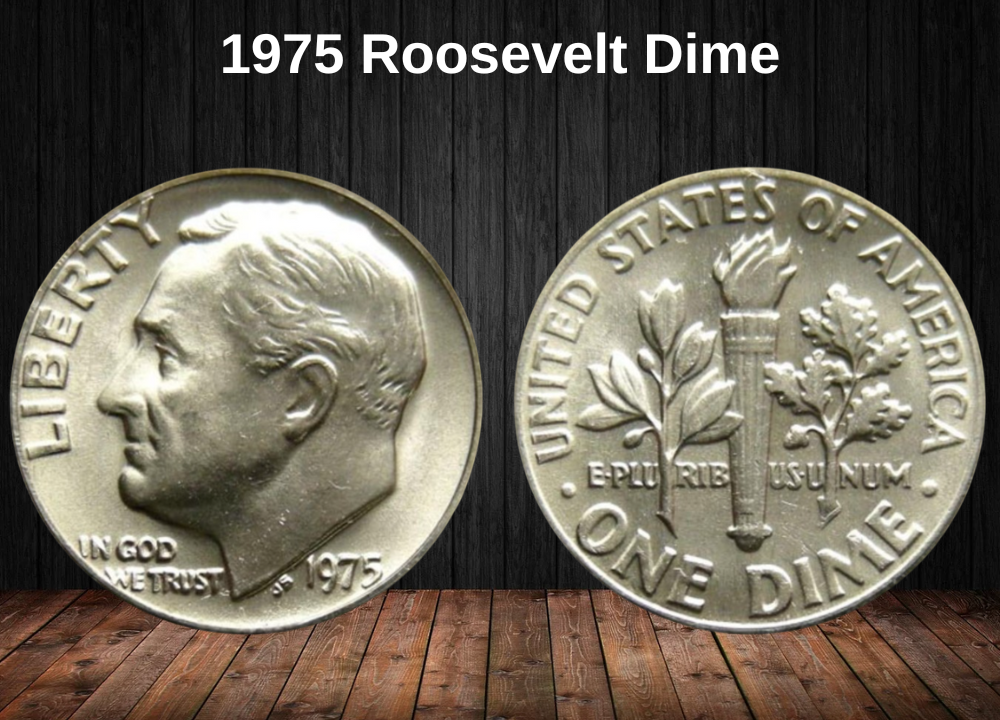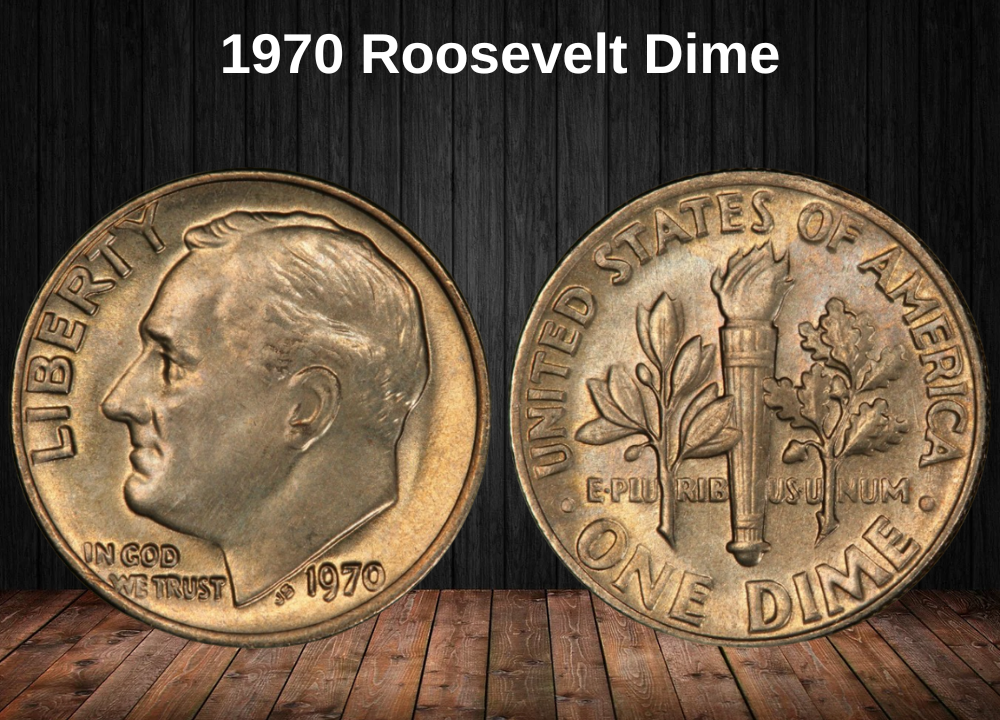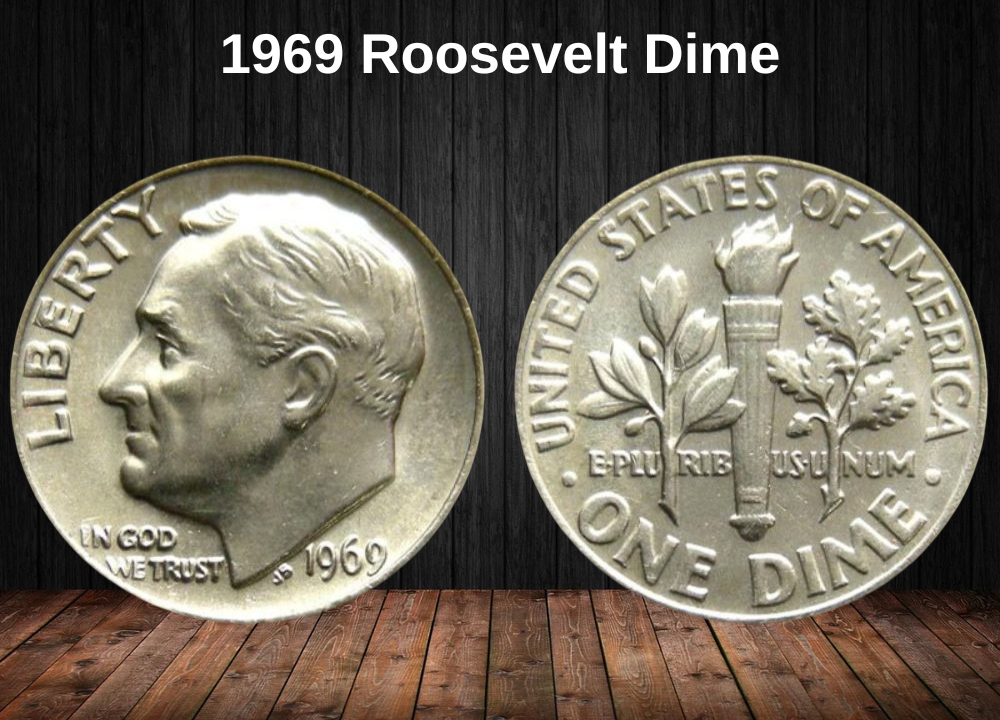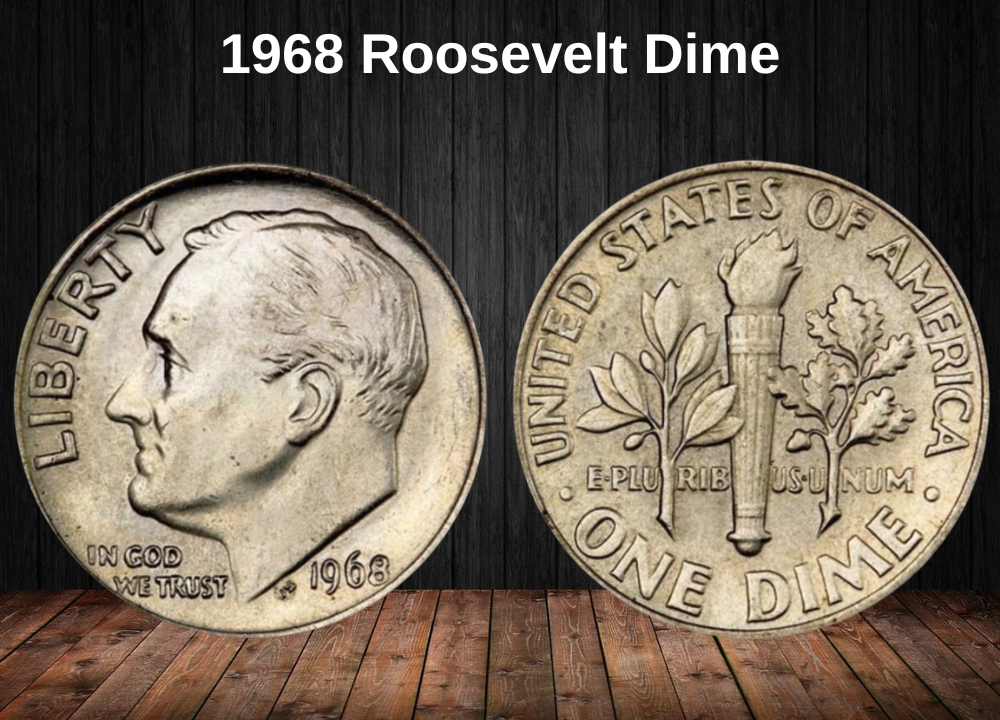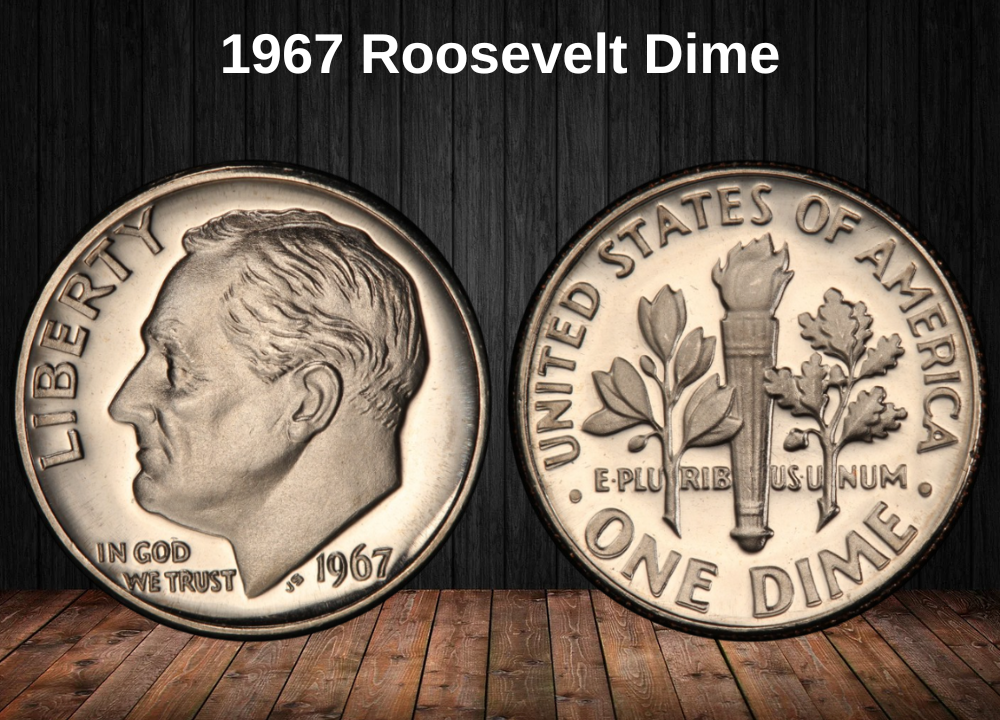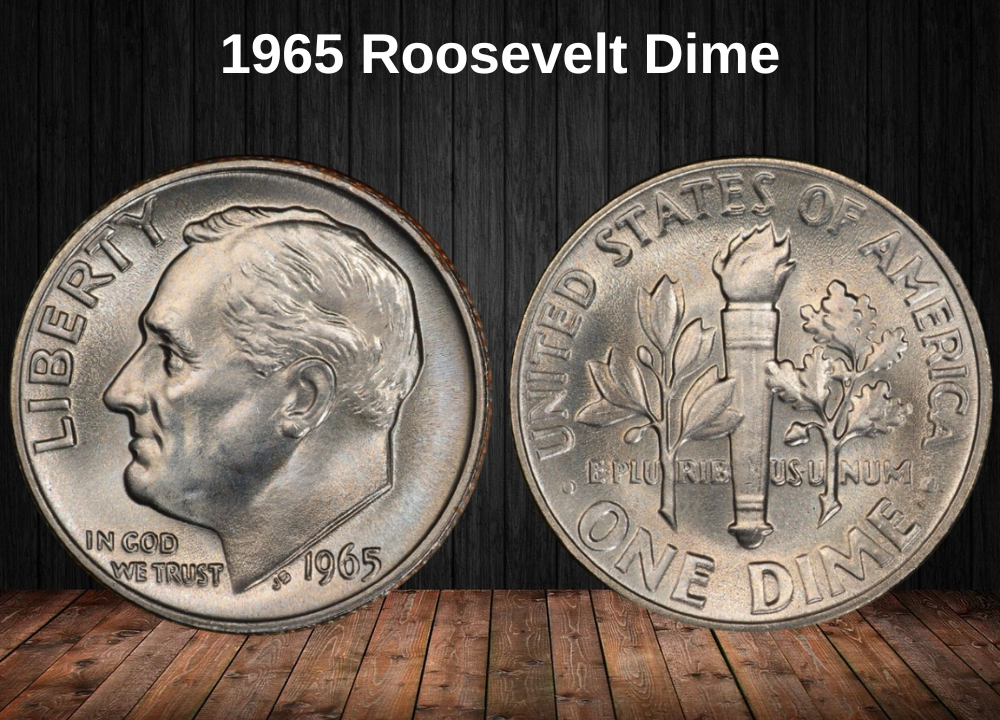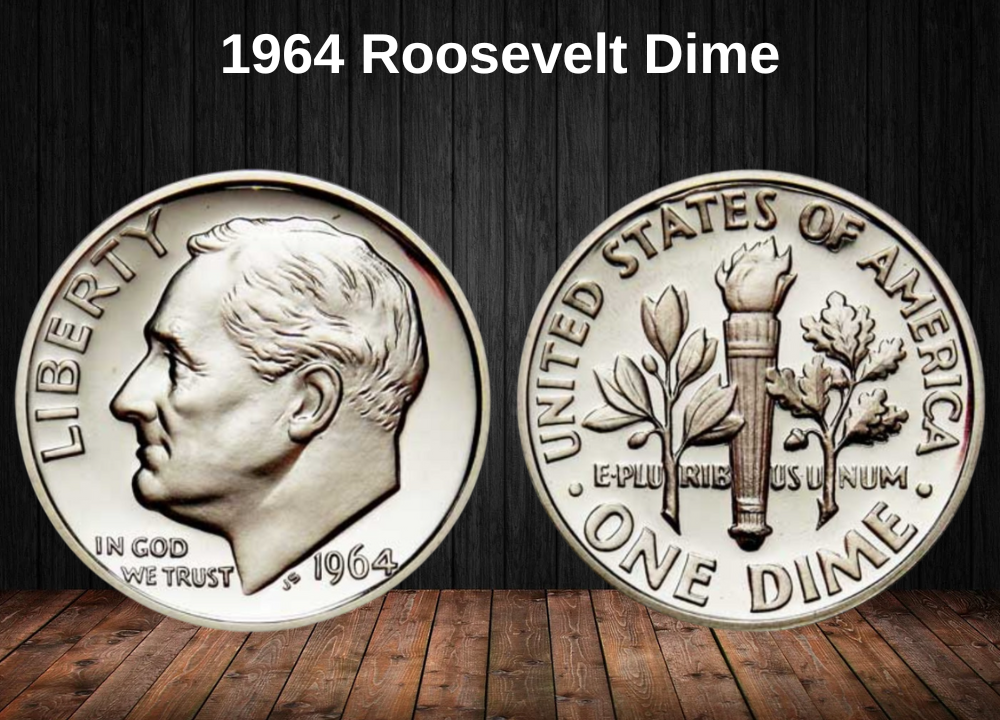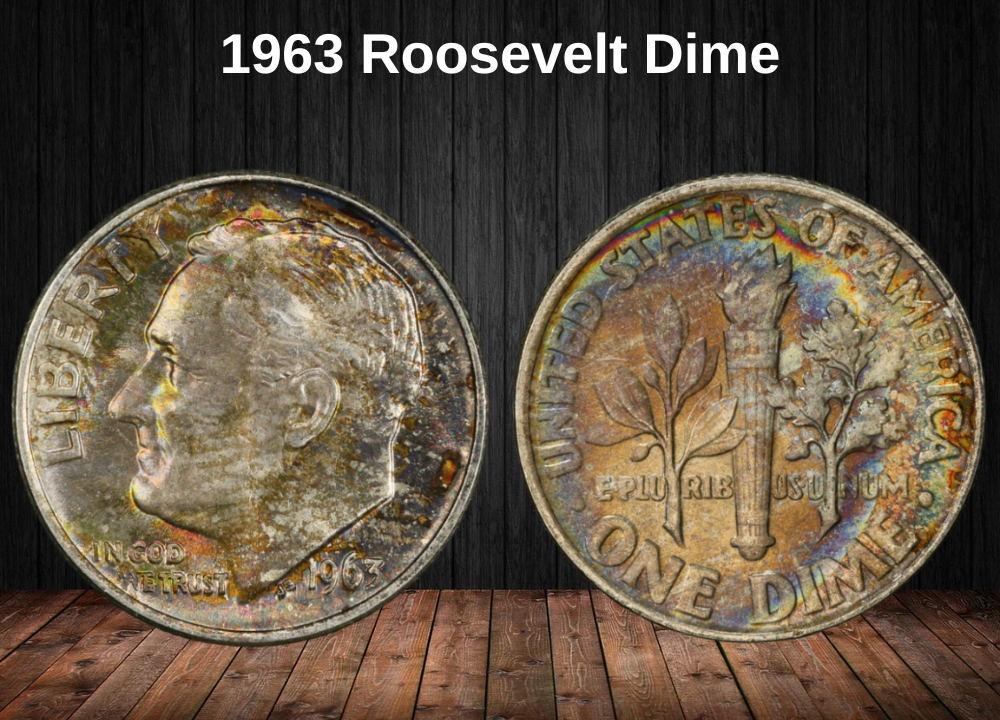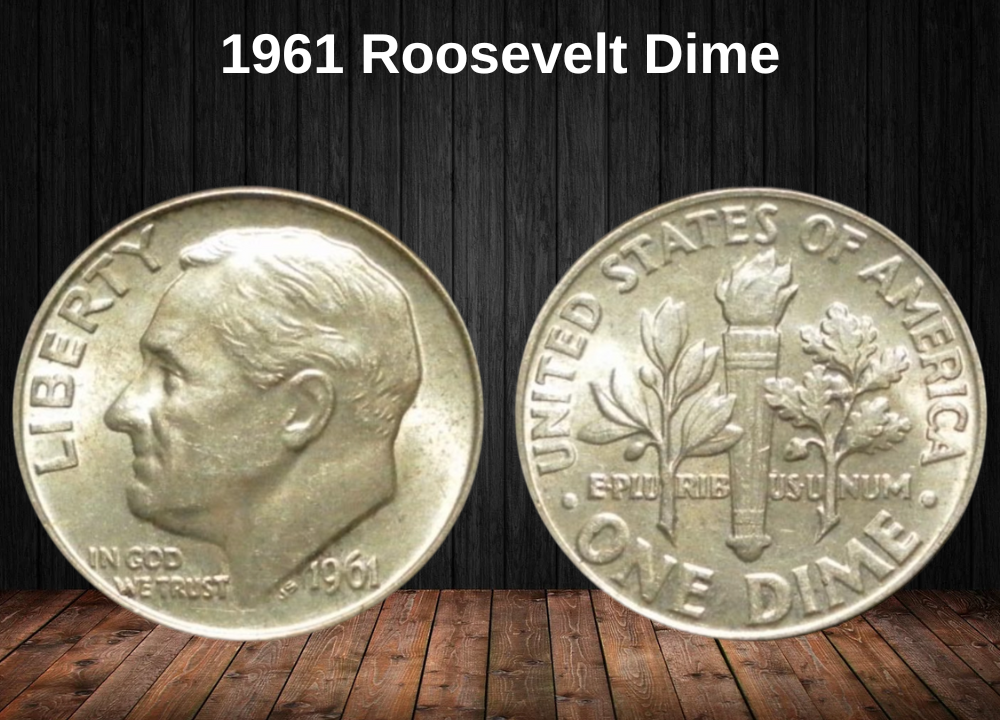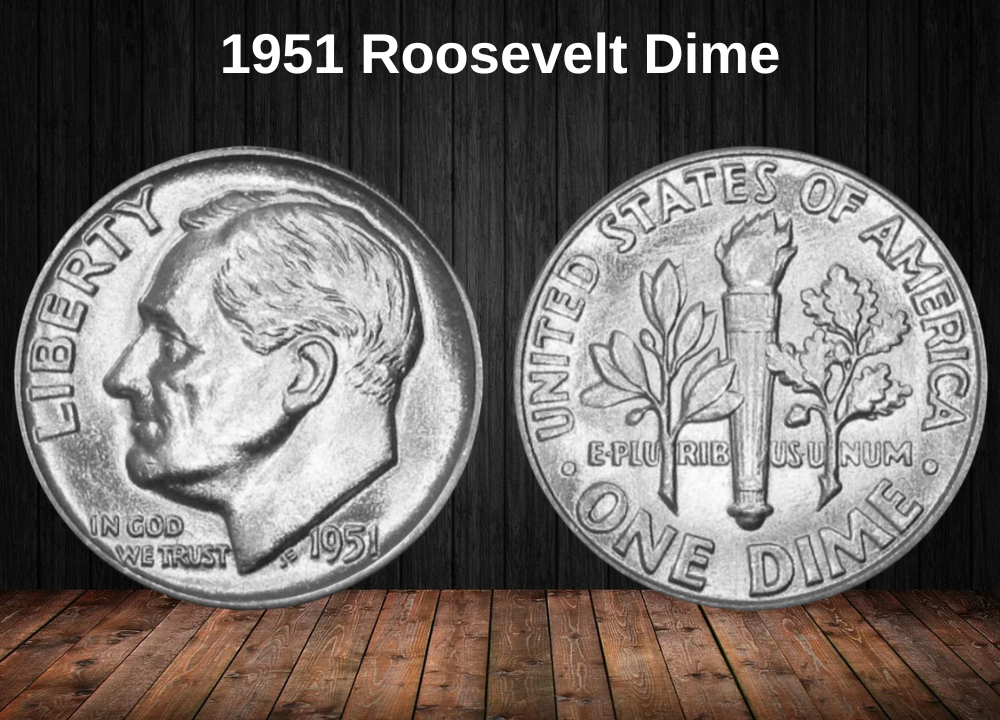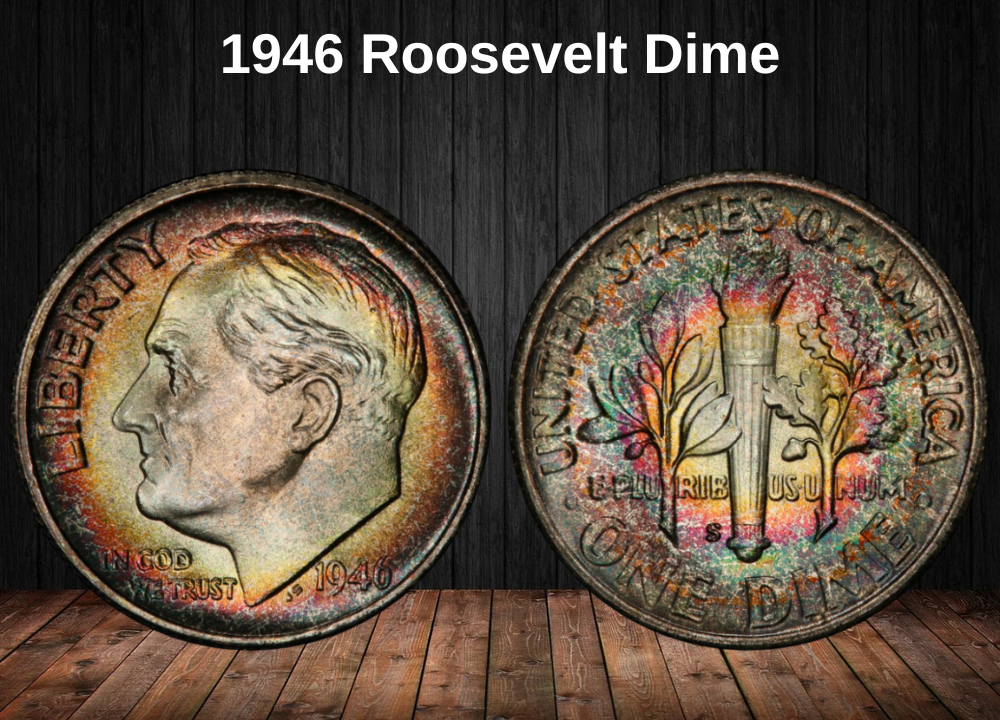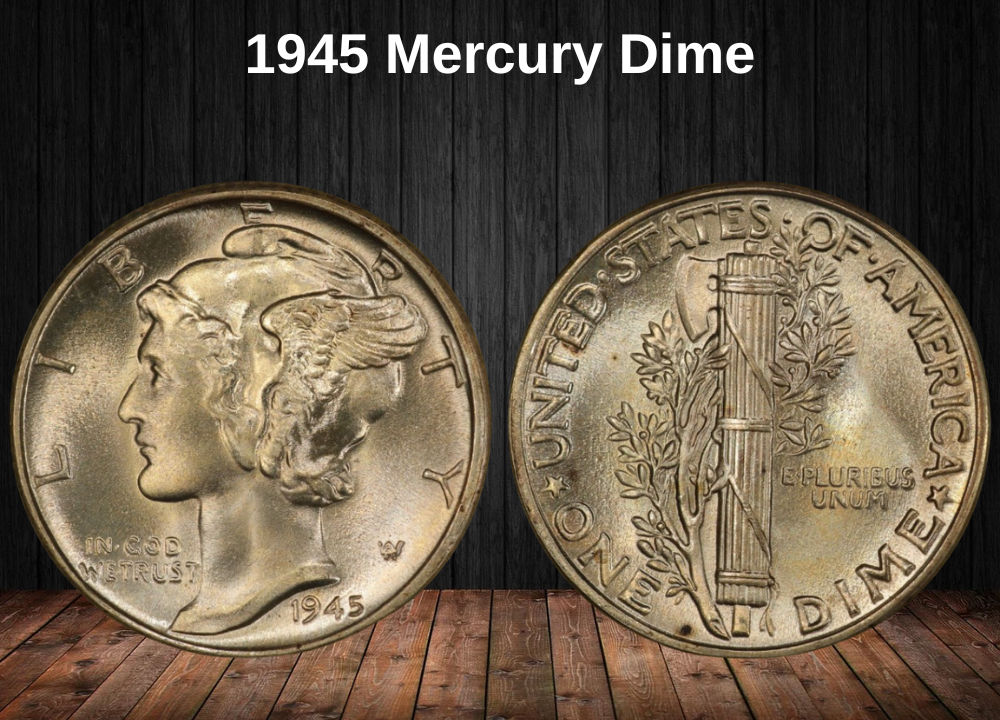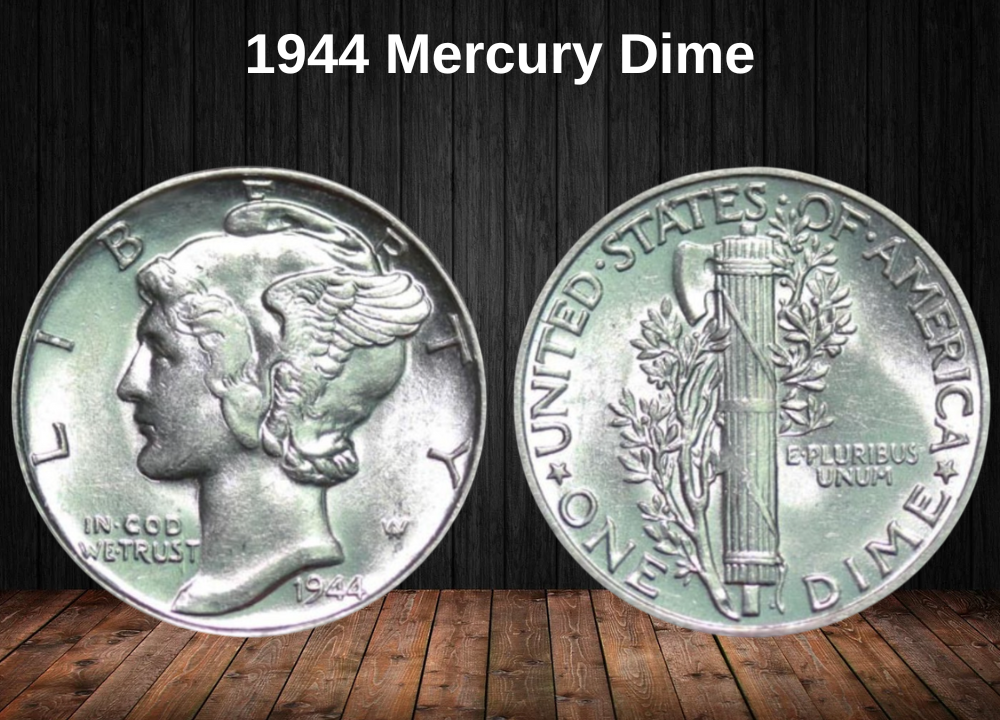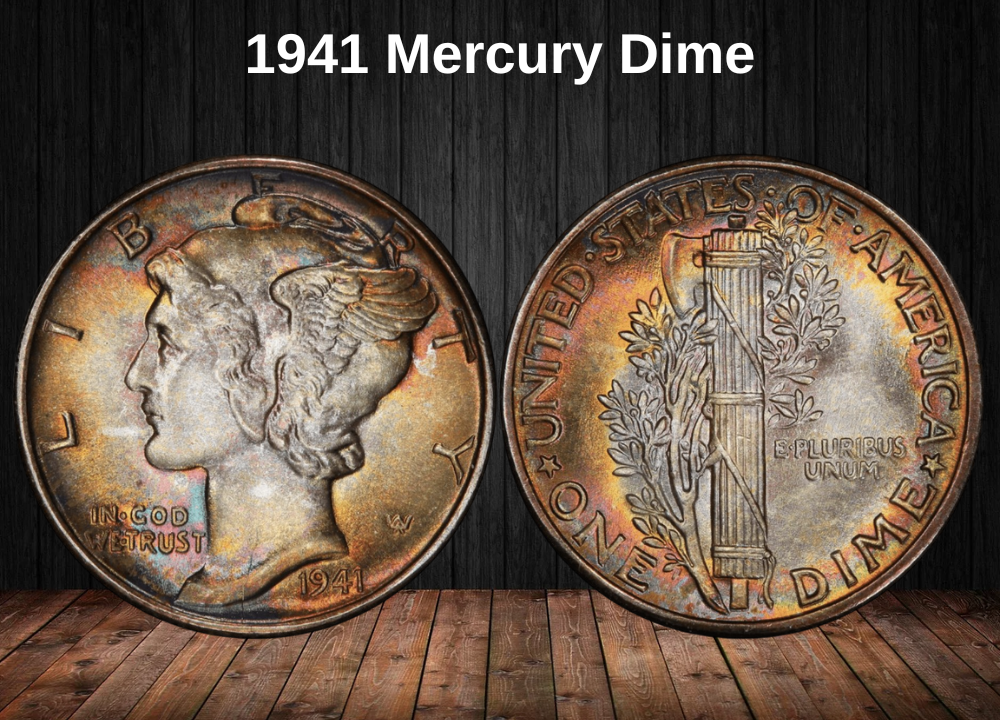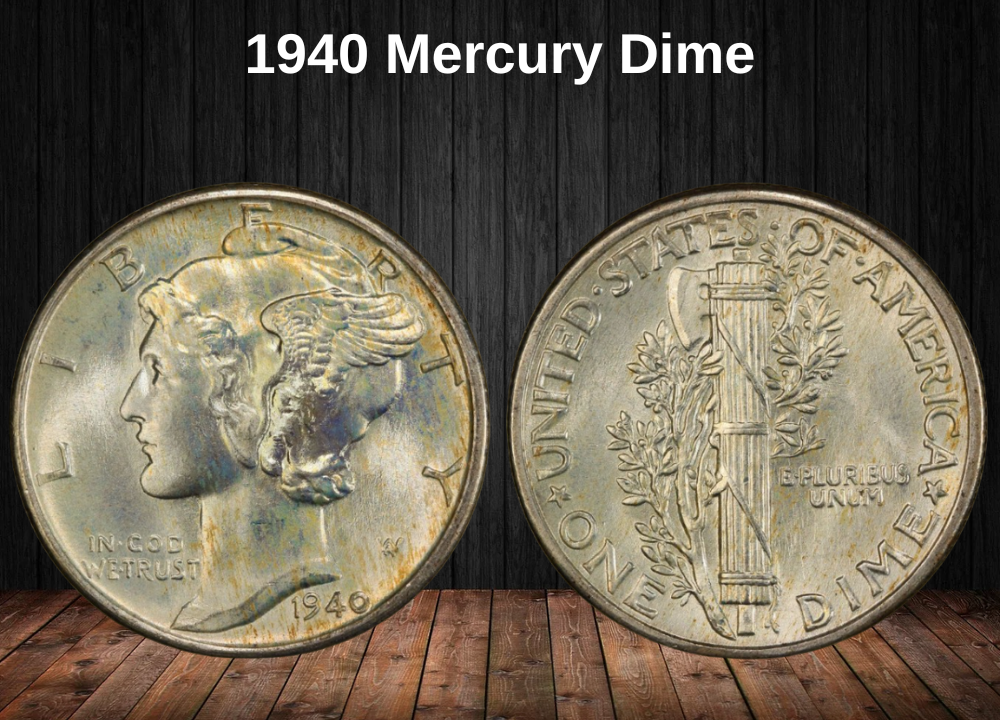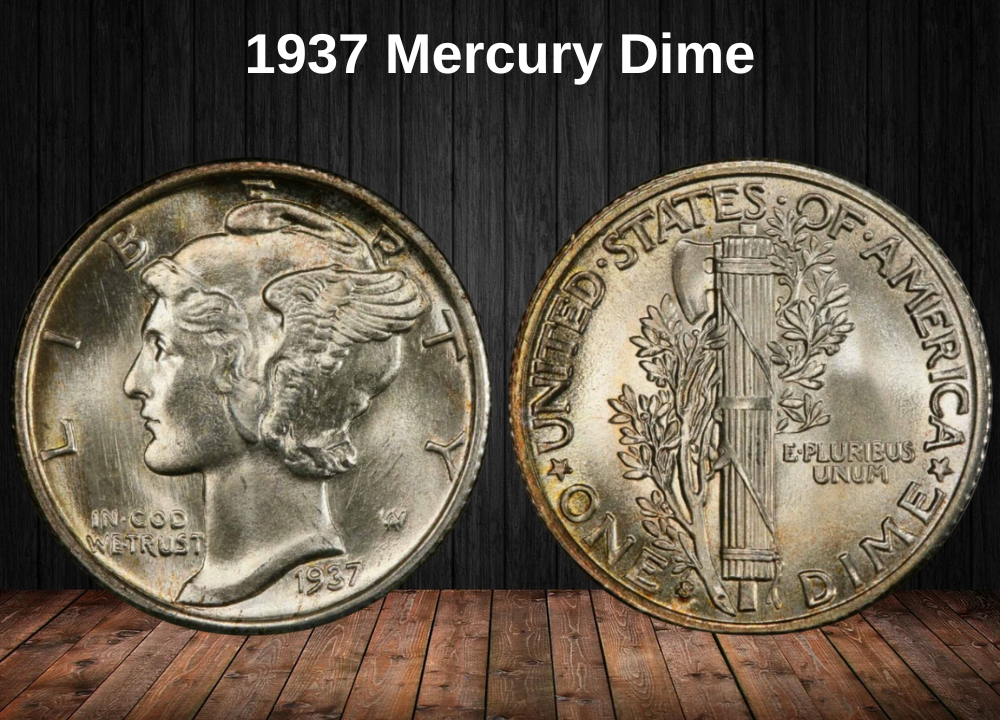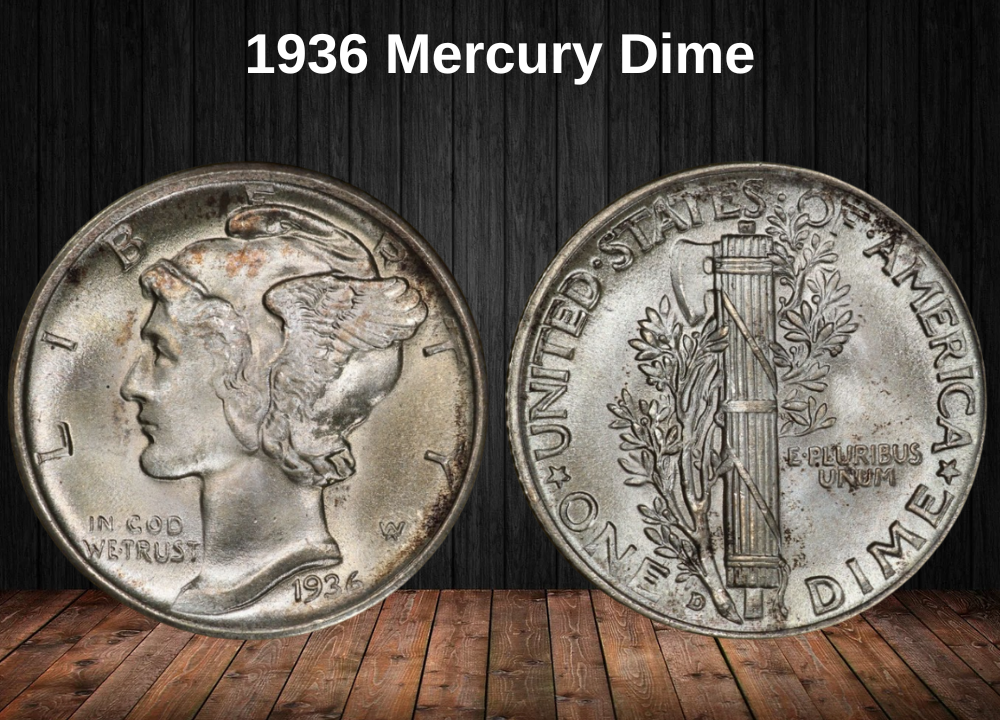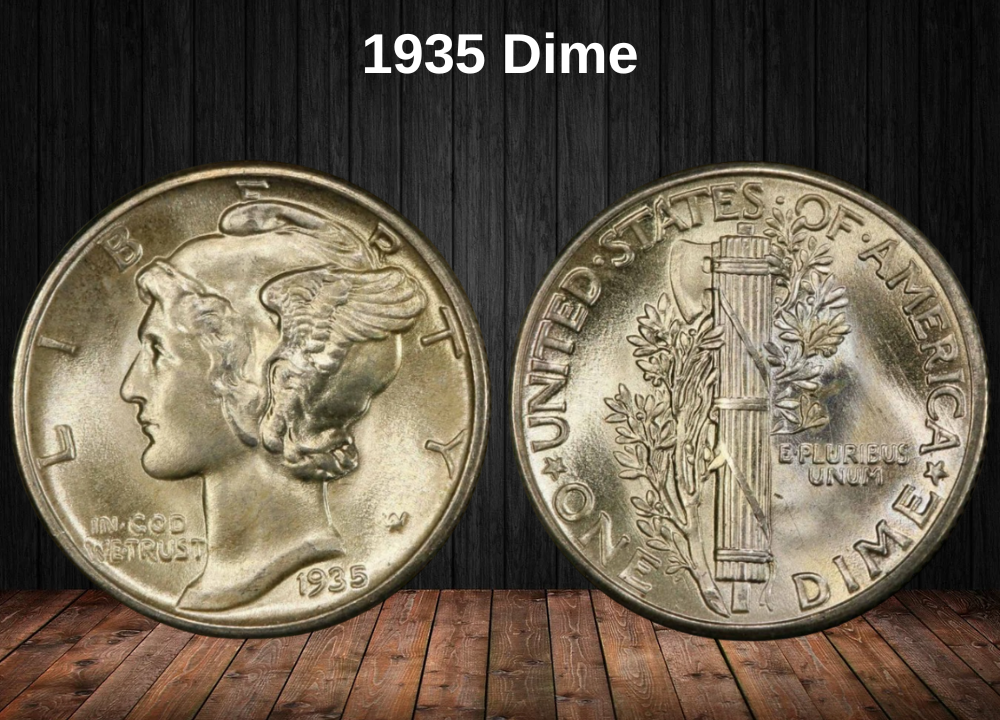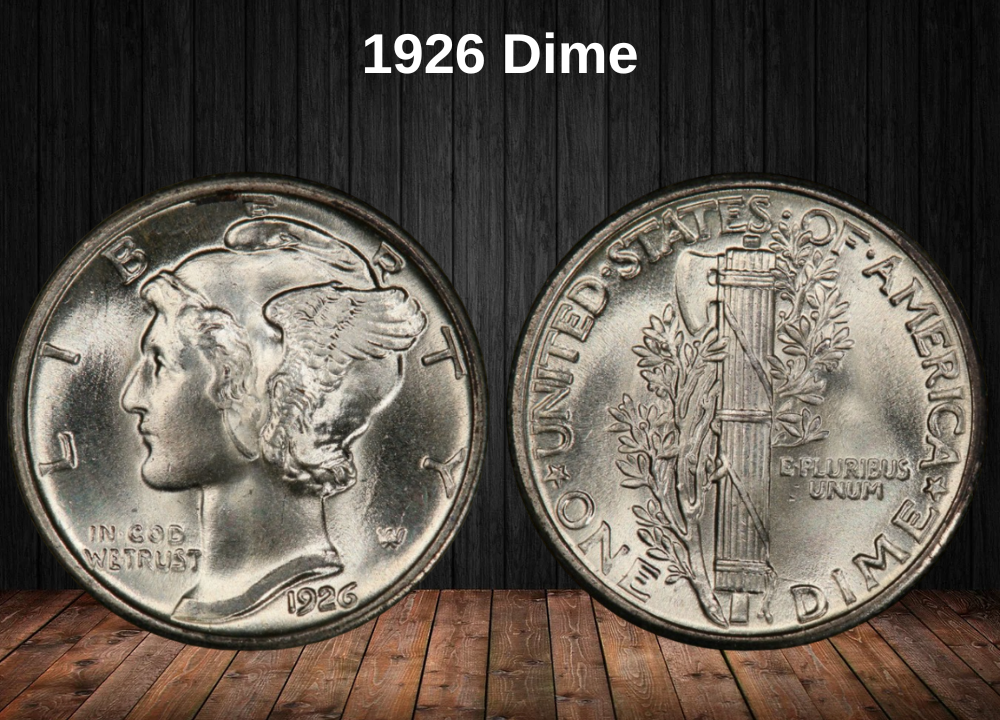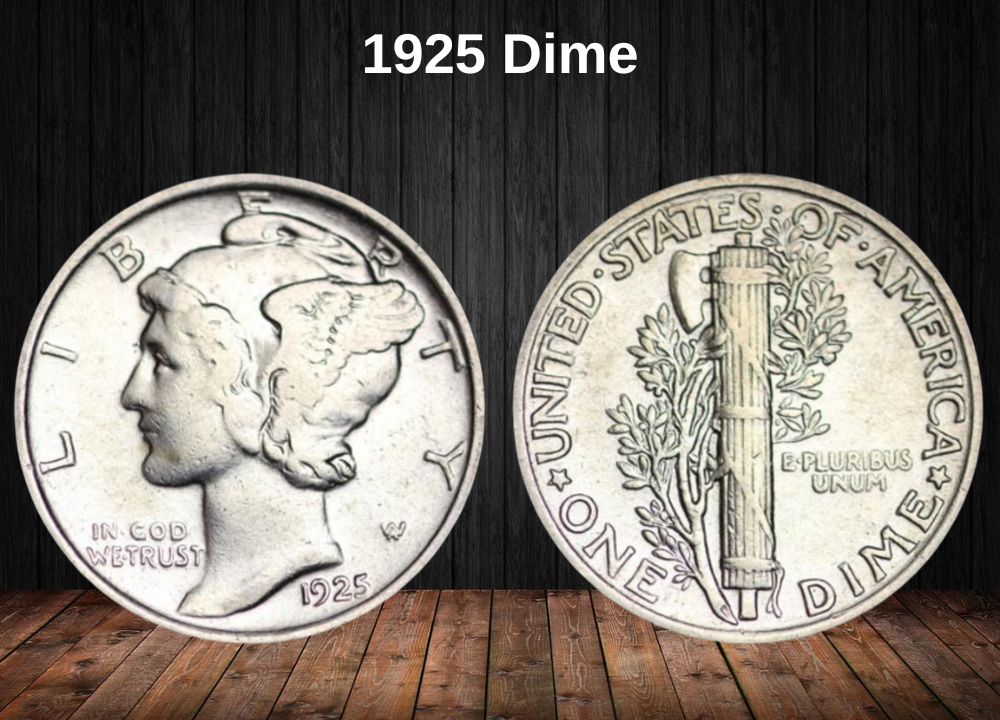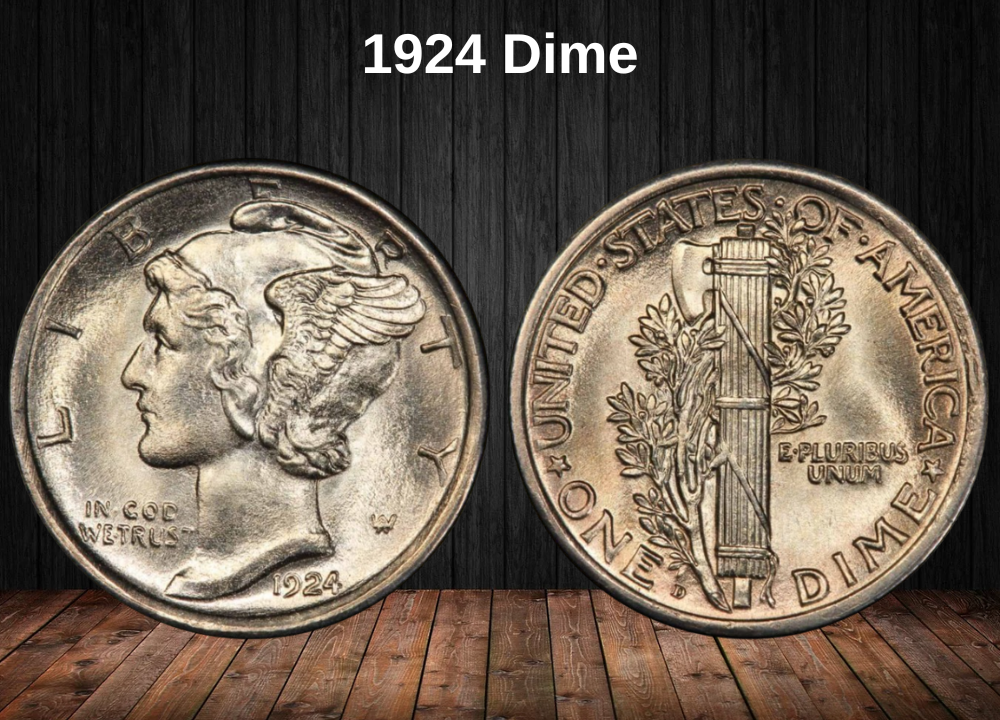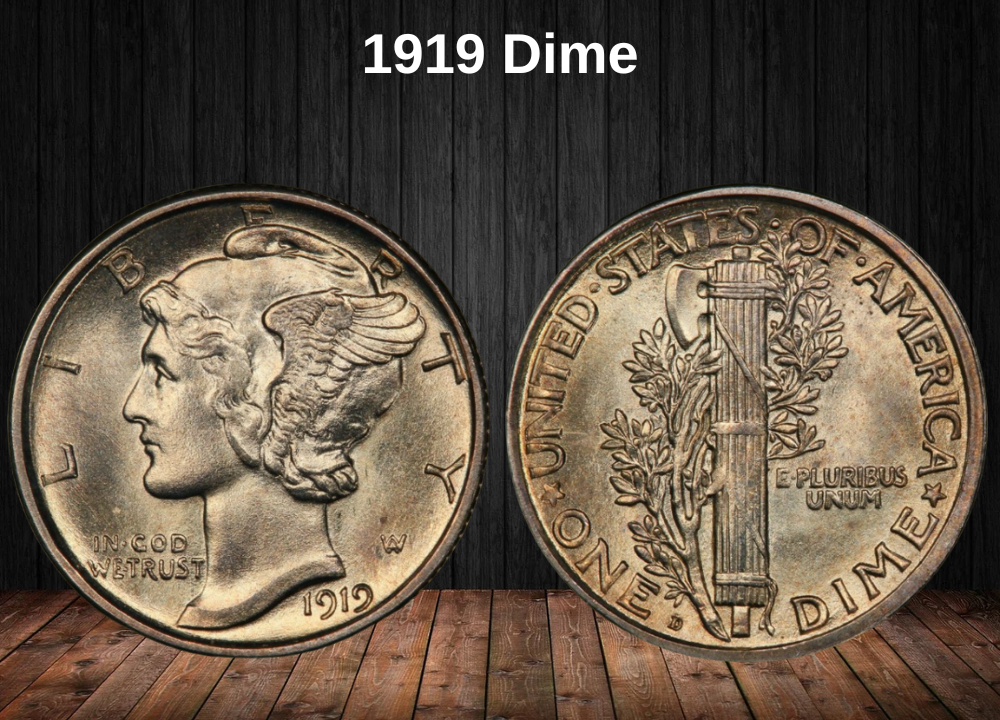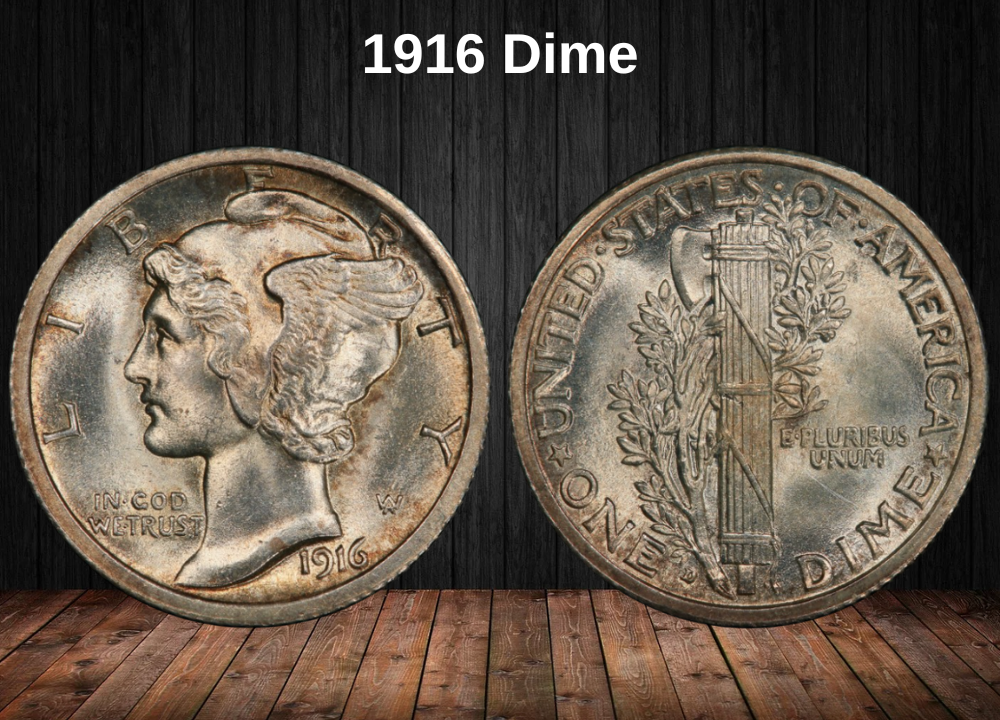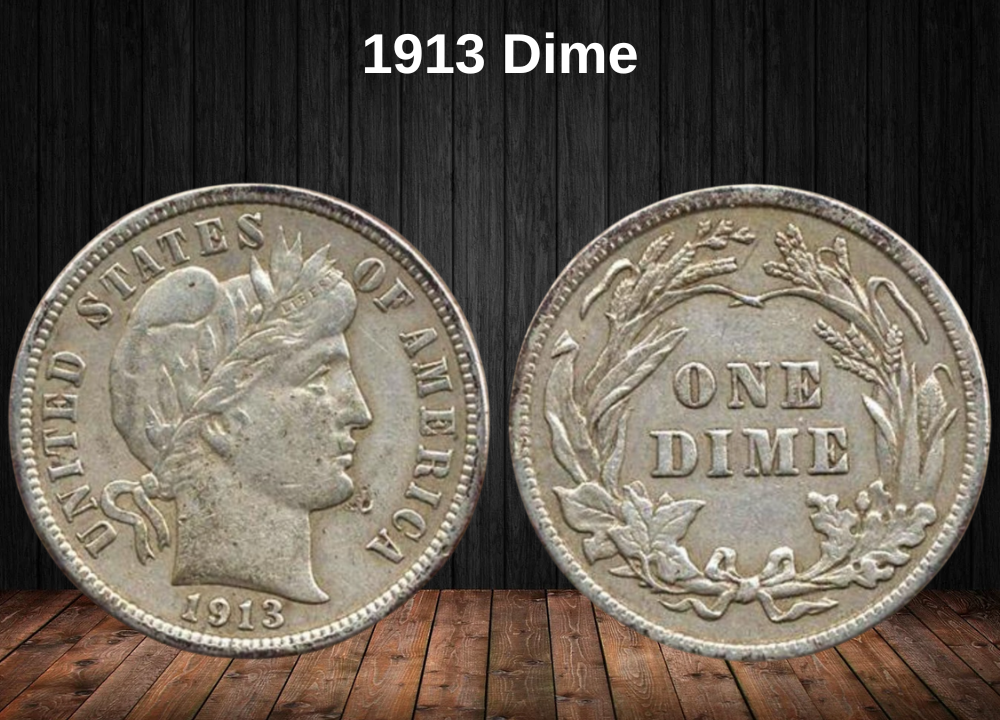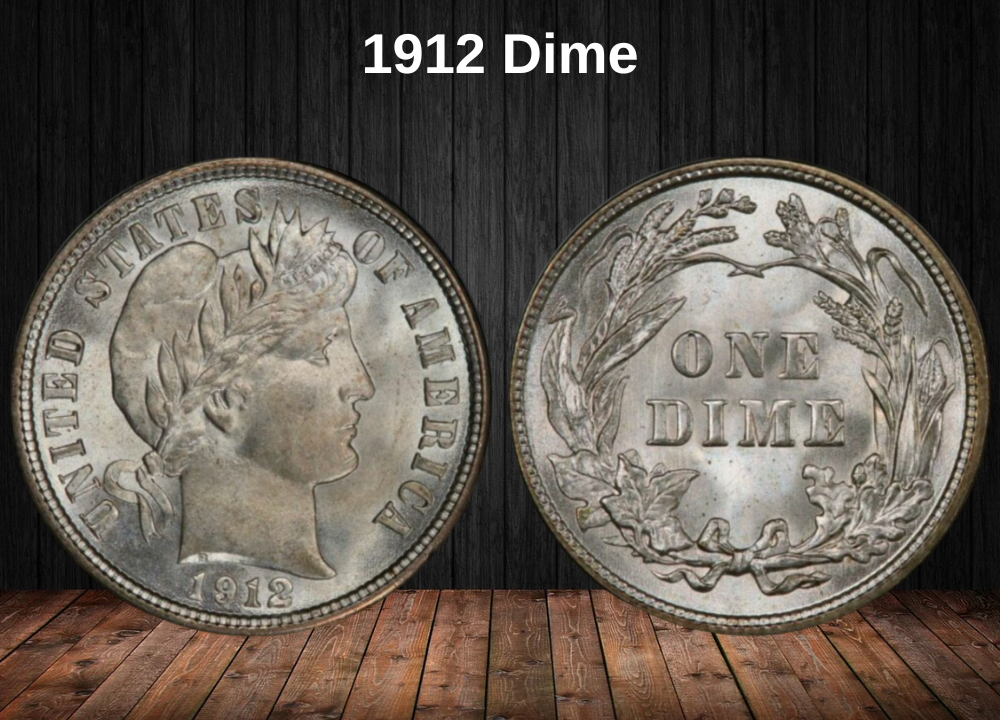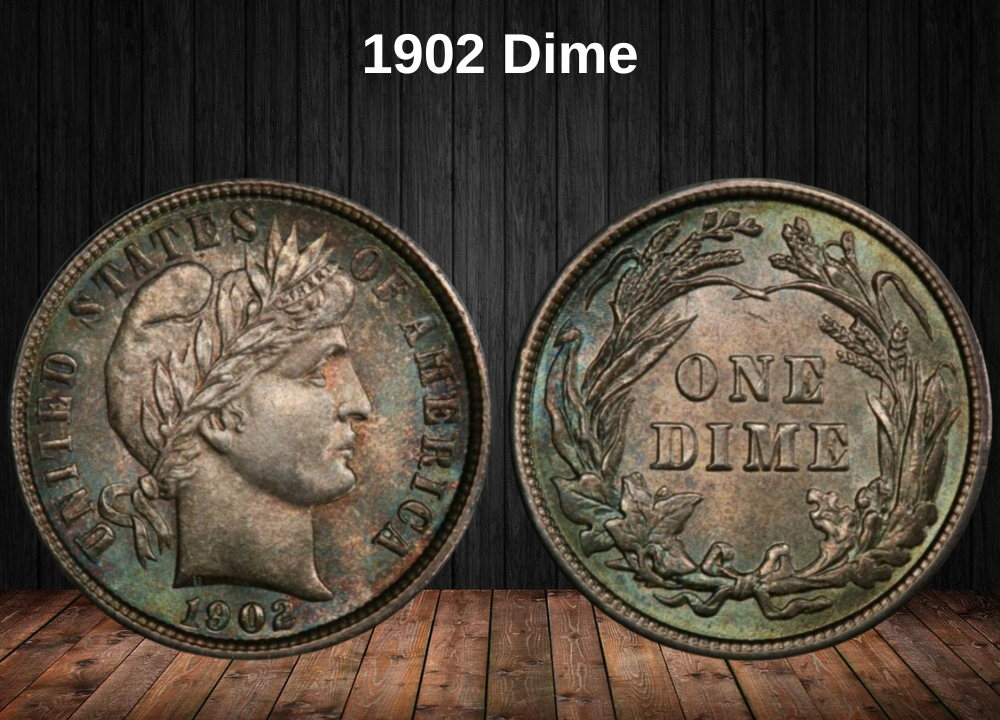The 1939 Mercury Dime, officially known as the Winged Liberty Head Dime, is one of the most elegant silver coins in American history. Designed by sculptor Adolph A. Weinman and first issued in 1916, the coin features Lady Liberty wearing a winged Phrygian cap symbolizing freedom of thought. Its resemblance to the Roman god Mercury earned it the nickname “Mercury Dime.”
By 1939, the U.S. Mint had already produced over two decades of Mercury dimes. Even though they were struck in high numbers, these coins continue to attract collectors today thanks to their artistry, history, and silver content. Unlike modern clad coins, all Mercury dimes were struck in 90% silver, making even the most circulated examples worth more than face value.
1939 Dime Value Chart
Here is a quick reference chart showing the approximate market values of 1939 Mercury Dimes depending on mint mark and condition:
| Condition | 1939 No Mint Mark Dime | 1939 D Dime | 1939 S Dime |
|---|---|---|---|
| Good (G4) | $3.40 | $3.40 | $3.40 |
| Very Good (VG8) | $3.99 | $3.99 | $3.99 |
| Fine (F12) | $4.54 | $4.54 | $4.54 |
| Very Fine (VF20) | $4.80 | $4.80 | $4.80 |
| Extra Fine (XF40) | $5.09 | $5.09 | $6.11 |
| About Uncirculated (AU50) | $6.77 | $7.02 | $15 |
| Mint State (MS60) | $11.06 | $11.06 | $29 |
| Mint State (MS65) | $33 | $40 | $53 |
| Proof (PR65) | $276 | — | — |
History of the 1939 Mercury Dime
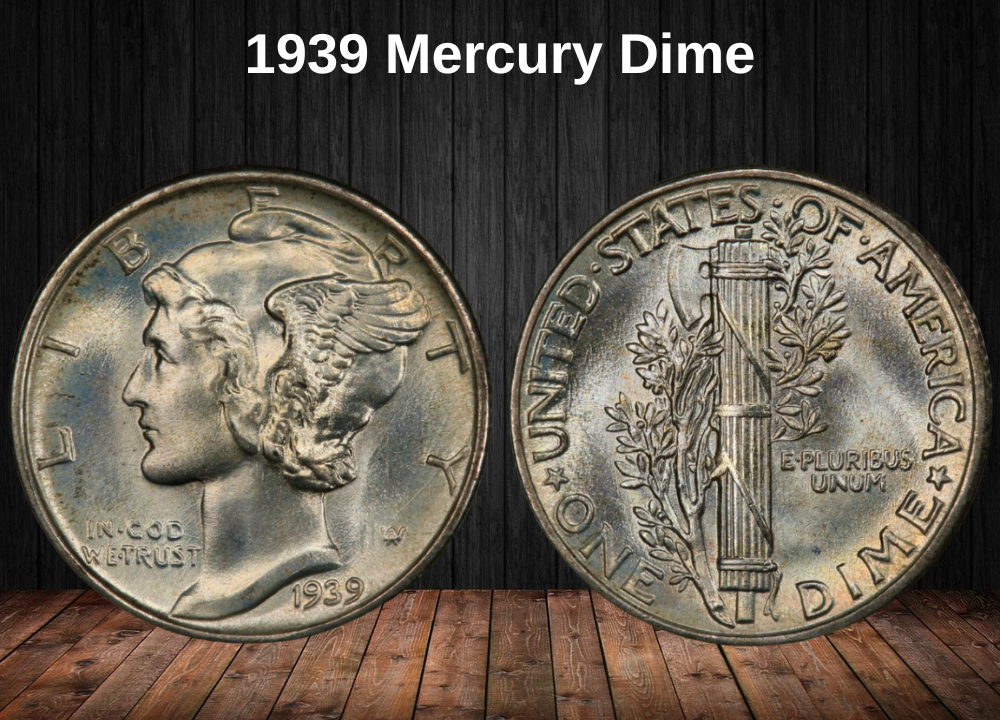
The 1939 Mercury Dime, officially known as the Winged Liberty Head Dime, is one of the most iconic coins in American numismatics. First introduced in 1916, this design by sculptor Adolph A. Weinman was selected from more than 50 entries in a U.S. Mint competition.
Minted from 1916 to 1945, the Mercury dime became a powerful symbol of America’s resilience during the period between the two World Wars. The obverse depicts Lady Liberty wearing a winged Phrygian cap, representing freedom of thought. However, its resemblance to the Roman god Mercury led to the coin’s popular nickname, which has endured ever since.
By 1939, Mercury dimes were firmly established in circulation and widely collected. That year, they were struck in large numbers at the Philadelphia, Denver, and San Francisco mints, with a small quantity of proofs made for collectors.
1939 Mercury Dime Mintages
| Location | Type | Mintage |
|---|---|---|
| Philadelphia | 1939 No Mint Mark Dimes | 67,740,000 |
| Philadelphia | 1939 Proof Dimes | 9,321 |
| San Francisco | 1939 S Dimes | 10,540,000 |
| Denver | 1939 D Dimes | 24,394,000 |
| Total | — | 102,683,321 |
Legacy of the 1939 Mercury Dime
The Mercury dime series was replaced in 1946 by the Roosevelt dime, created to honor President Franklin D. Roosevelt after his passing. Despite its replacement, the Mercury dime remains one of the most admired and artistic coin designs in U.S. history.
To celebrate its centennial in 2016, the U.S. Mint struck 125,000 Mercury Dimes in 24-karat gold. Collectors quickly purchased the entire mintage within minutes, highlighting the timeless appeal of Weinman’s design, even 100 years after its debut.
Features of the 1939 Mercury Dime
Adolph A. Weinman designed the beautiful Mercury dimes, and the U.S. Mint struck them from late 1916 until 1945. Their popularity among Americans was so great that the Mint reissued them in 2016 as 24-karat gold coins for collectors.
The Obverse of the 1939 Mercury Dime

The 1939 Mercury Dime obverse features Lady Liberty wearing a traditional winged Phrygian cap. The Phrygian cap, used in many cultures from Persia to Eastern Europe, has long symbolized freedom of thought and liberty. The wings attached to the cap add a modern and intellectual spirit, aligning with America’s values at the time.
- The word LIBERTY is placed prominently above and slightly behind Liberty’s head.
- On the left side is the motto IN GOD WE TRUST.
- To the right appear the designer’s initials, AW (Adolph A. Weinman).
- The date 1939 is positioned below Liberty’s neck.
The Reverse of the 1939 Mercury Dime
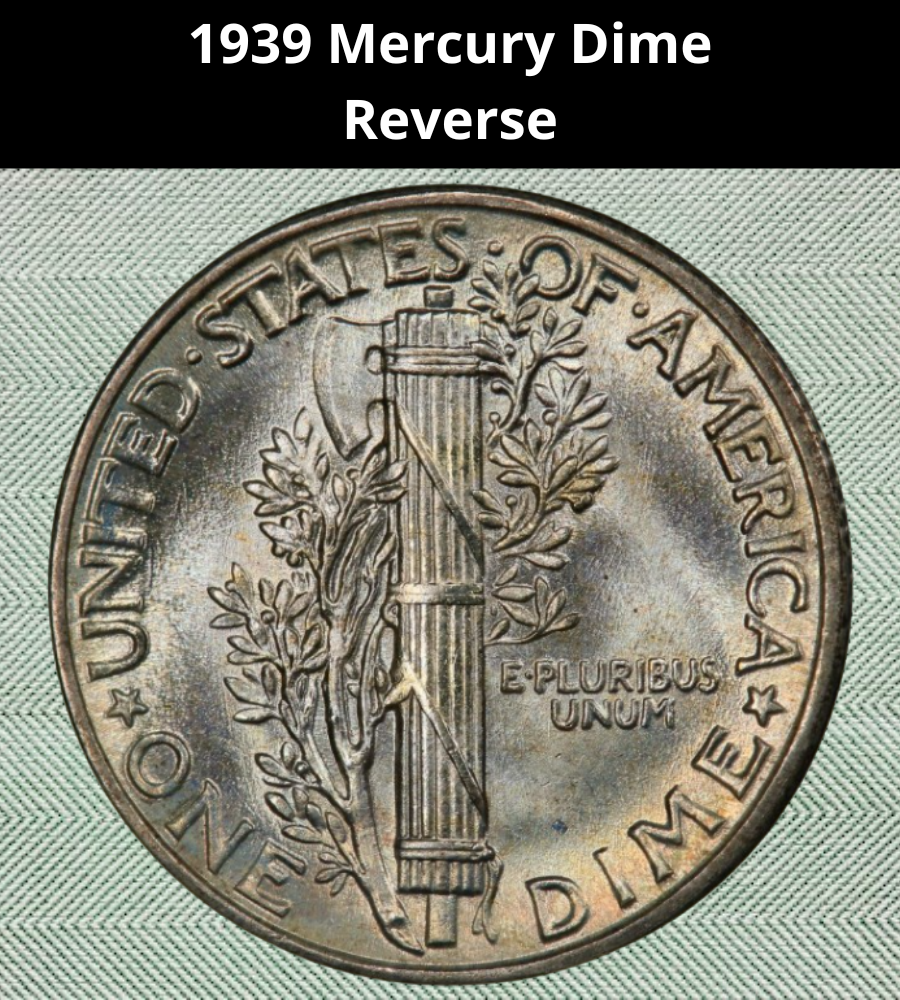
The reverse design presents a striking image:
- At its center is a bundle of fasces—rods bound together with leather straps, topped by an axe blade. This ancient Roman symbol represented authority, strength, and justice.
- Twined around the fasces is a large olive branch, symbolizing peace and balance, ensuring that the ideas of war and justice are tempered by diplomacy.
- Around the coin runs the inscription UNITED · STATES · OF · AMERICA · ONE DIME.
- On the right side is the Latin phrase E · PLURIBUS · UNUM, meaning “Out of many, one”, signifying unity among the states.
- The edge of the coin is reeded, with 118 reeds.
1939 Mercury Dime Details
| Feature | Specification |
|---|---|
| Face value | Ten cents ($0.10) |
| Shape | Round |
| Composition | 90% silver, 10% copper |
| Weight | 0.080 troy oz (2.50 g) |
| Silver weight | 0.072 troy oz (2.24 g) |
| Diameter | 0.705 in (17.91 mm) |
| Thickness | 0.053 in (1.35 mm) |
| Edge | Reeded (118 reeds) |
Other Features
The 1939 Mercury Dime is a small yet elegant silver coin. With 90% silver content, it carries significant intrinsic value, making even circulated examples desirable to collectors. Its combination of classical symbolism—Liberty, justice, and peace—with refined artistry has secured its place as one of the most admired coin designs in U.S. history.
1939 Mercury Dime Grading
The 1939 Mercury Dime grading process evaluates a coin’s appearance, strike quality, and overall level of wear or damage. Collectors and dealers use the Sheldon scale, which ranges from 1 to 70, to classify coins from heavily worn examples to flawless Mint State specimens.
- Lower grades correspond to coins that are still identifiable but show heavy circulation wear.
- Mid-range grades display moderate wear with visible design details.
- Higher grades (About Uncirculated and Mint State) retain most or all of their original luster.
Below is a breakdown of how the 1939 Mercury Dime is typically graded:
| Grade Number | Grade Name | Description |
|---|---|---|
| 1 | Basal State-1 | Barely identifiable; only faint outlines visible. |
| 2 | Fair | Major details are worn away, but the coin is still recognizable. |
| 3 | Very Fair | Slightly clearer than Fair; still heavily worn. |
| 4–6 | Good | Outlines of Liberty and fasces visible, but most details flat. |
| 7–10 | Very Good | Liberty’s cap and fasces are recognizable, though weak. |
| 12–15 | Fine | Moderate wear; Liberty’s wings and fasces details partially visible. |
| 20–30 | Very Fine | Light to moderate wear; legends are sharp, details clearer. |
| 40 | Extremely Fine (XF) | Minor wear; most design elements sharp and attractive. |
| 50 | About Uncirculated (AU) | Only light traces of wear on the highest points; much luster remains. |
| 60 | Mint State (MS60) | Uncirculated but may show contact marks or weak strike. |
| 65 | Mint State (MS65) | Strong strike, great eye appeal, minimal imperfections. |
| 70 | Mint State (MS70) | Perfect coin; no flaws even under 5x magnification (extremely rare). |
1939 Dime Value Guides
The total mintage of the 1939 Mercury Dimes reached 102,683,321 pieces, struck across three U.S. mints: Philadelphia, Denver, and San Francisco. In addition, Philadelphia produced a small batch of proof coins for collectors. Below is a breakdown of each type and its current value range.
1939 No Mint Mark Dime (Philadelphia)
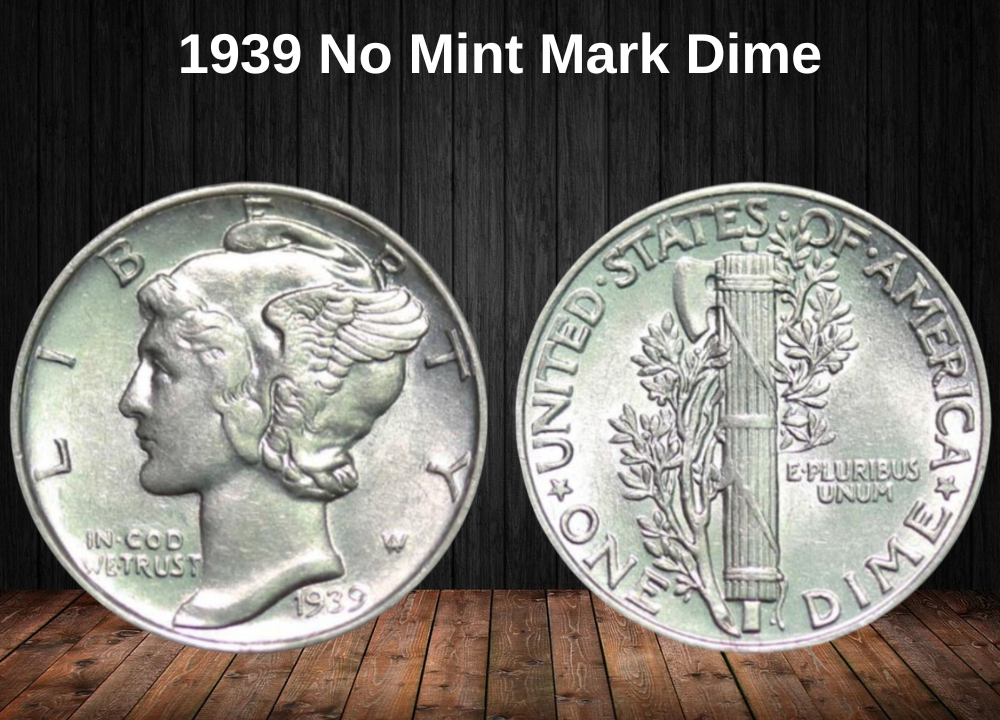
- Mintage: 67,740,000
- Circulated value: $2.82 – $6.03
- Mint State (MS 60–MS 67): $14 – $170
- MS 68: $600
- MS 69: $8,250 (extremely rare)
Despite being nearly 85 years old, most Philadelphia issues remain affordable, especially in circulated grades. Only the top-tier Mint State coins attract serious collector premiums.
1939 Proof Dime (Philadelphia)
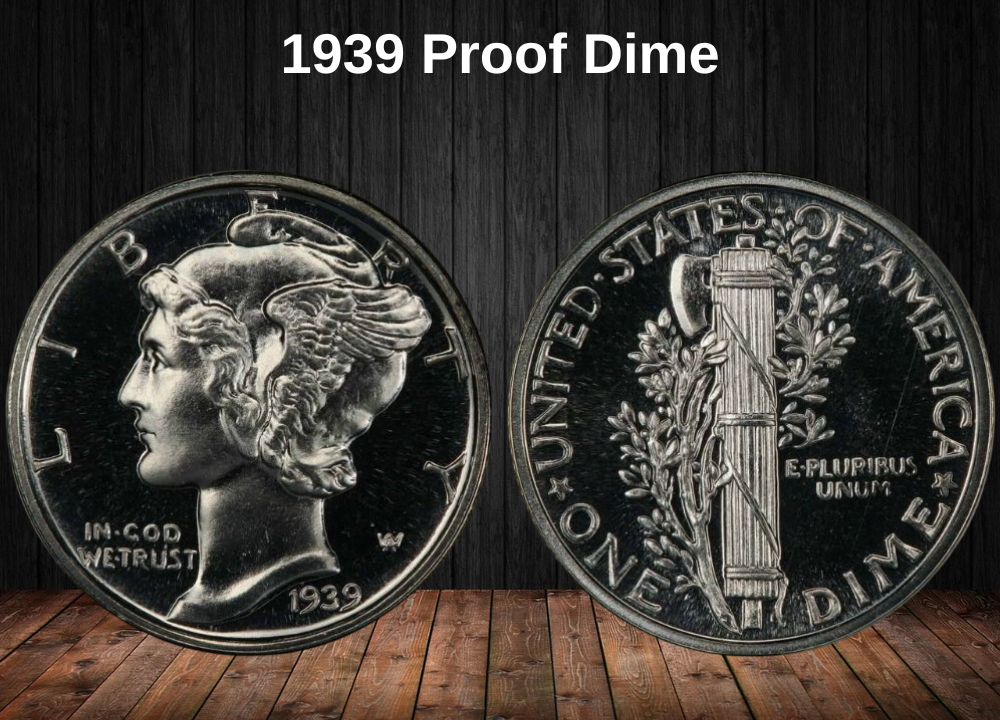
- Mintage: 9,321
- Standard proof values:
- PR 58 → $90
- PR 60 → $125
- PR 63 → $155
- PR 65 → $265
- PR 67 → $675
- PR 68 → $1,750
- Cameo & premium proofs:
- PR 64 CAM → $975
- PR 65 CAM → $2,100
- PR 66 CAM → $5,500
- PR 67 CAM → $8,500
- PR 68 CAM → $18,500
Auction records:
- 1939 PR 68 CAM → $9,775
- 1939 PR 68 (non-CAM) → $21,600 (2021 sale)
Proof coins are scarce and highly prized for their mirrored fields and sharp detail, with cameo contrasts demanding huge premiums.
1939 D Dime (Denver)

- Mintage: 24,394,000
- Circulated value: $2.82 – $6.27
- Mint State (MS 60–MS 67): $10.12 – $125
- MS 68: $500
Auction highlight: one MS 68 specimen sold for $617 in 2014.
1939 S Dime (San Francisco)
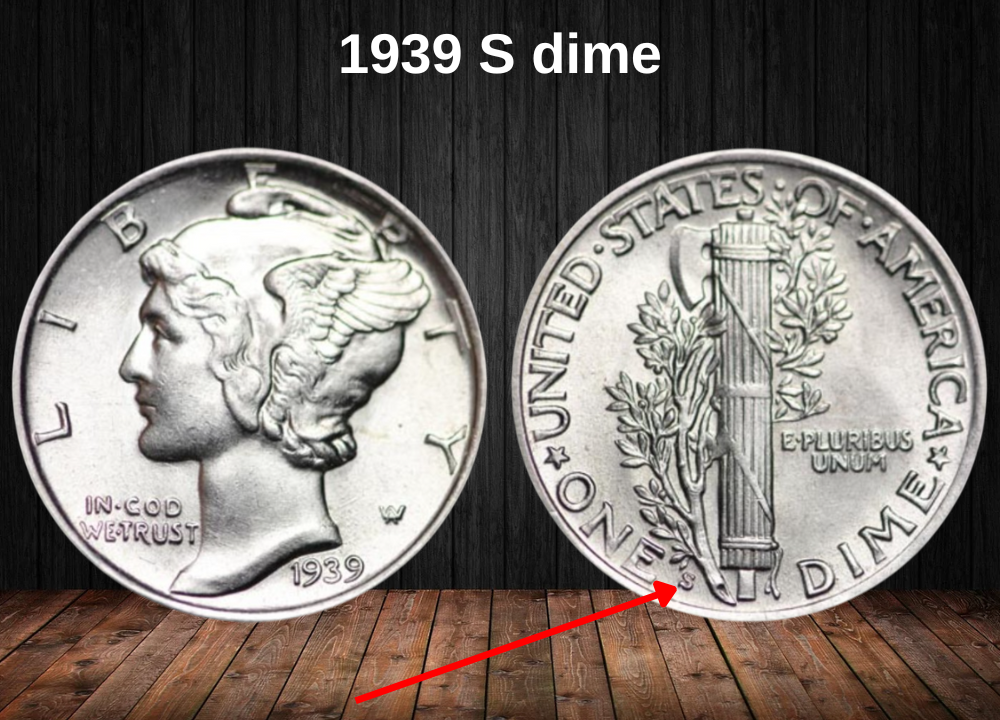
- Mintage: 10,540,000
- Circulated value: $2.82 – $14
- Mint State (MS 60–MS 67): $30 – $335
- MS 68: $2,000
Auction record: one 1939-S MS 68 sold for $2,160 in 2019.
Rare 1939 Dime Error List
Despite the U.S. Mint’s rigorous quality control, every coin series inevitably produces a few striking errors. These flaws—ranging from subtle to dramatic—make certain 1939 Mercury Dimes highly collectible and valuable. Below are the most recognized 1939 dime error types.
Full Bands (FB)
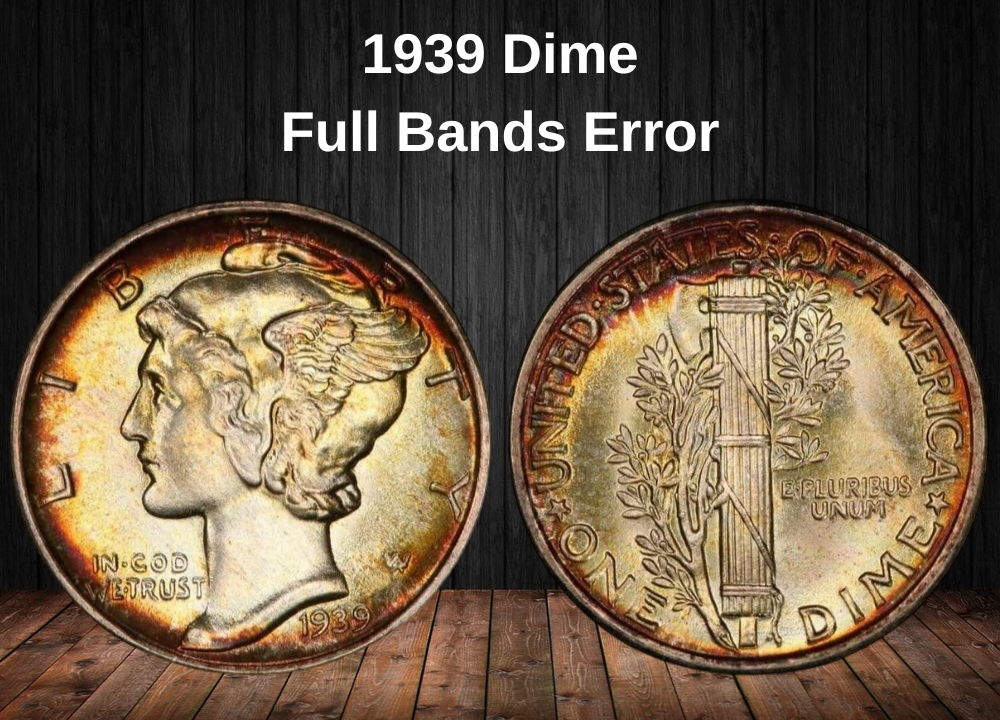
The Full Bands designation refers to Mercury dimes where the horizontal bands on the fasces (reverse) are fully and clearly separated, reflecting the sharpest strikes possible.
- Philadelphia FB dimes: $25 – $825 (up to MS 67)
- MS 68 → $4,500 – $6,000
- Auction record → $12,650 (2000)
- Denver FB dimes:
- MS 67 → $160 – $200
- MS 68 → $900 – $1,100
- MS 69 → $8,000 – $10,000
- Auction record → $42,300 (MS 69, sold in 2019)
- San Francisco FB dimes:
- MS 61–MS 66 → $55 – $1,150
- MS 67 → $2,260 – $2,712
- MS 68 → $12,000 – $18,000 (but record sale only $10,350)
FB examples are the most desirable strike quality error for 1939 dimes, with San Francisco pieces commanding the highest premiums.
Re-Punched Mint Mark (RPM)
An RPM error occurs when the mint mark is accidentally punched into the die more than once, causing visible overlapping or shadowing.
- Common on 1939-D (Denver) dimes
- Typical value → $20 – $25
- Auction highlight → one MS 65 sold for $2,795 on eBay
Even though minor, RPM errors can reach remarkable premiums in top grades.
Doubled Die Obverse (DDO)

The DDO error appears when a misaligned hub strikes the die more than once, creating visible doubling.
- Seen on 1939 obverse inscriptions and date
- Circulated/low grades → $40 – $50
- Auction highlights:
- MS 66 → $500
- MS 66 FB → nearly $800
Collectors actively hunt for these doubled features, especially when paired with Full Bands.
CUD Error
A CUD error results from a broken die, leaving a raised, irregular blob or extra metal on the coin.
- Found on Philadelphia 1939 dimes
- Typical value → $40 – $45 (only if the break is large and prominent)
These errors are rare and visually dramatic, but values remain modest compared to FB and DDO examples.
Where to Sell Your Dime Coin?
Now that you know the value of your dime, the next step is deciding where to sell it. There are several trusted options—both online and in person—that can help you get the best price depending on your coin’s rarity and condition.
To see the full list of recommended places, along with their advantages and disadvantages, check our complete guide on where to sell your dime coins.
FAQ about the 1939 Mercury Dime Value
What makes the 1939 Mercury Dime valuable?
The value of a 1939 Mercury Dime comes from three factors: silver content, rarity in higher grades, and collector demand. While circulated examples are worth only slightly more than their silver melt value, uncirculated coins with strong strikes—especially Full Bands (FB)—can bring thousands of dollars at auction.
How much is a 1939 Mercury Dime worth today?
In average circulated condition, most 1939 dimes are valued between $2.82 and $6.27. In uncirculated condition (MS 60–MS 67), they range from $14 to $335, depending on the mint. Exceptional pieces in MS 68 or MS 69 can command $2,000 to over $8,000, with rare Full Band examples bringing much higher premiums.
Which 1939 Mercury Dime is the rarest?
Among regular strikes, the 1939-S Mercury Dime with Full Bands is considered the scarcest and most valuable. High-grade proofs from Philadelphia (PR 67–PR 68) are also rare and highly sought after. Auction records show PR 68 and MS 69 Full Band coins reaching prices in the five-figure range.
Do mint marks affect the 1939 dime’s value?
Yes. Mint marks significantly influence value:
- Philadelphia (no mint mark): Largest mintage (67.7M), most common.
- Denver (D): 24.3M struck, scarcer in high grades.
- San Francisco (S): Only 10.5M struck, rarest overall, especially desirable in MS 67–68 FB condition.
- Proofs (Philadelphia): Only 9,321 made, commanding the highest values in auctions.
What is the value of a 1939 Mercury Dime with Full Bands?
Full Bands coins are among the most valuable. Depending on the mint and grade:
- Philadelphia: $25 – $6,000 (MS 68), record $12,650
- Denver: $160 – $10,000, record $42,300 (MS 69 FB, 2019)
- San Francisco: $55 – $18,000, record $10,350
Collectors prize these for their strike quality, making them some of the top investments in the Mercury dime series.
How much is a 1939 proof Mercury Dime worth?
Proof dimes struck in Philadelphia have the following approximate values:
- PR 60–PR 64: $125 – $185
- PR 65–PR 66: $265 – $400
- PR 67–PR 68: $675 – $1,750
Auction results show cameo and high-luster examples far exceeding price guides, with some PR 68s selling for $18,500–$21,600.
Are error 1939 dimes worth more?
Yes. Popular errors include Re-Punched Mint Marks (RPM), Doubled Die Obverse (DDO), CUD breaks, and especially Full Bands variations. While minor RPMs may sell for $20–$25, high-grade RPMs and DDOs have sold for several hundred dollars. Full Bands errors remain the most valuable, with record prices exceeding $40,000.


